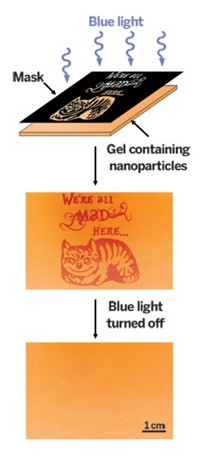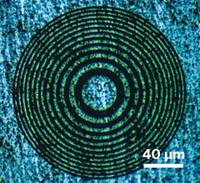Advertisement
Grab your lab coat. Let's get started
Welcome!
Welcome!
Create an account below to get 6 C&EN articles per month, receive newsletters and more - all free.
It seems this is your first time logging in online. Please enter the following information to continue.
As an ACS member you automatically get access to this site. All we need is few more details to create your reading experience.
Not you? Sign in with a different account.
Not you? Sign in with a different account.
ERROR 1
ERROR 1
ERROR 2
ERROR 2
ERROR 2
ERROR 2
ERROR 2
Password and Confirm password must match.
If you have an ACS member number, please enter it here so we can link this account to your membership. (optional)
ERROR 2
ACS values your privacy. By submitting your information, you are gaining access to C&EN and subscribing to our weekly newsletter. We use the information you provide to make your reading experience better, and we will never sell your data to third party members.
Materials
Drug Release In Hot Water
Near-infrared light heats water molecules inside polymer particles, triggering the tiny capsules to deliver payload
by Lauren K. Wolf
April 14, 2014
| A version of this story appeared in
Volume 92, Issue 15
To deliver drugs at a certain time and place inside the body, scientists have been developing tiny particles that release their cargo when triggered by infrared light. Capable of penetrating human tissue, this light heats metals or activates designer photosensitive polymers at a particle’s core to set off delivery. Looking for a release mechanism that’s less reliant on a particle’s composition, a research team at the University of California, San Diego, has for the first time released cargo from particles by using hot water (ACS Nano 2014, DOI: 10.1021/nn500702g). The scientists, led by Adah Almutairi, focused 980-nm laser light onto hydrated particles made of a commercially available biodegradable polymer called poly(lactic-co-glycolic acid) (PLGA). Because that laser wavelength excites vibrations in water absorbed inside the particles, the spheres heat up, soften, and discharge molecules embedded within. The team demonstrated that this strategy works when the particles are in a water-based solution and when they are inside cells. According to Christopher Bettinger, a materials scientist at Carnegie Mellon University, this is a clever technique, and because it uses simple materials, “it has the potential to make a large impact on the controlled release of therapeutics.”






Join the conversation
Contact the reporter
Submit a Letter to the Editor for publication
Engage with us on Twitter